| apache religion and ceremonies |
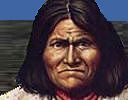 |
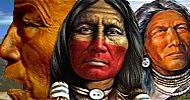 |
|
|
|
||
| N'de, Dinë, Tinde, Inde or "The People" |
| |
apache religion and ceremonies |
Artifact Replicas|Jewelry|Clothing|Figurines|On Sale|New Productsapache religion and ceremoniesExplore Apache religion, wedding and burial customs, and ceremonies. Apache Creation Story Western Apache (Chiricahua, White Mountain, Northern and Southern Tonto, San Carlos and Cibecue Apache) Religious BeliefsThe Chiricahua Apache name for their main spirit or God is Usen. With just about every aspect of life, the Apaches recognized Yusn or Ussen, the Giver-of –life, as the omnipotent deity, which is the source of all supernatural power. The Giver-of-life was prayed to for power in almost every part of an Apaches life.The Western Apaches believe that there are a number of supernatural powers associated with natural phenomena. These powers are neutral with respect to good and evil, but they can be used for various individual purposes. Control of these powers can be either sought after and developed or thrust upon one. Belief is supported by a mythology that explains the creation of the world and includes several deities. Most important are Life Giver, sometimes identified with the sun; Changing Woman, a source of eternal youth and life; and her twins, Slayer of Monsters and Child of Water. Also important are anthropomorphic mountain spirits called gaan. Other important figures in myth are Coyote and Old Man Big Owl. Agents of powers are called diyin (shaman). Those who have their knowledge secretly and use it for their own ends are witches, or ilkashn. In the past there were a large number of curing ceremonies each related to a specific power. These were performed as individual treatment seemed warranted. The only major ceremony still performed is the girl's puberty ceremony, both a rite of passage and a community ritual. It harnesses the power of Changing Woman to ensure individual health and long life and community health. In the last twenty years this ceremony has been elaborated, with expensive gift exchanges continuing between relatives of the girl and relatives of her godparents for several years after the initial ceremony. In the recent past both Western medicine and traditional ceremonies were used in various combinations. Today contemporary Western medicine is the primary form of medical treatment, although Changing Woman's power is sought after at puberty rites, and some individual Apaches know songs and prayers to powers, which they use primarily within their immediate families. Everyone is given an allotted life span, which, unless violence or withcraft intervenes, will end because of old age. Concepts of an afterlife are vague. Special actions are taken to make sure the dead do not return and try to lure the living to come with them. Chiricahua
Mescalero Apache Religious BeliefsIn traditional belief, a Creator (neither male nor female), which is beyond human comprehension but is manifested in natural phenomena, made the world in four days. Portions of the Creator may be seen in the natural universe (thunder, wind, and so on), and the physical representation is said to be the sun. In addition, there are two Culture heroes, the Twin War Gods, Born for Water and Killer of Enemies, as well as a heroine, White Painted Woman. Power suffuses the universe and can be employed for good or ill. There are now many Christian denominations on the reservation; most people compartmentalize and maintain both Religious systems.Singers are the traditional practitioners and are so named for they sing ceremonies, complex recitations, and rituals. There are also medicine people, skilled in herbal and psychological healing. Ga?hé, or Mountain Gods, are impersonated in complex rituals; they may dance to conduct a blessing or healing. The primary extant ceremony is the girls' puberty ceremony, sung any time after initial menses. Singers also sing blessing ceremonies, sometimes in concert with the Mountain God dancers, who are often called upon to bless endeavors and give thanks for success. The world of humans is the world of illusion and shadow; reality resides in the other world of Power and Creator. Upon death a soul remains close to home for four days; if a proper funeral and burial is held, the soul is freed to make its way to the Land of Ever Summer, as some call it. There is disagreement about whether reincarnation is possible, although most traditional people believe it is. Jicarilla Religous BeliefsThe Jicarilla held that a strong tie existed between themselves and the land because all natural objects and all living things were representations of the power of their chief deity, Hascin. Hascin was believed to have been born of the union of Black Sky and Earth Mother, two supernaturals who lived in the inner womb of the earth and who had existed since the beginning of time. In Jicarilla mythology Hascin was responsible for the creation of Ancestral Man and Ancestral Woman and also for the creation of the animals and the sun and moon. Sun and Moon were considered important supernaturals.According to their mythology the Jicarilla were the sole descendants of the first people to emerge from the underworld, the abode of Ancestral Man and Ancestral Woman who produced the first people. Animals were revered and entreated by the Jicarilla with special ceremonies prior to hunting because it was believed they were descended from the first animals who had used their powers to facilitate the emergence of the first people from the underworld. In the 1970s approximately 70 percent of Jicarillas continued to hold to their traditional religious beliefs. The Jicarilla believed that at birth a child might receive a special power from an animal, a celestial body, or some natural phenomenon. In later years this power would appear to the select individual who then had to decide whether to accept the power and become a shaman. If the person accepted it, he or she underwent a test of courage and then a period of training under the guidance of an experienced shaman during which prayers, songs, and Rituals were learned. The shaman's power could be either good or evil and was believed to be a finite resource, the effectiveness of which diminished with too frequent use. Jicarilla religious ceremonies were of two types, personal or shamanistic ceremonies and long-life Ceremonies. Shamanistic ceremonies included curing and divining rituals that required the shaman's special power. Long-life ceremonies did not require such special personal power. One of the most important long-life ceremonies was the annual autumn Relay Race that pitted the young men of the Ollero and Llanero bands against one another. The purpose of the race was to ensure an abundant food supply during the coming year. Participants were painted and decorated with feathers and yucca leaves according to their band affiliation and raced on an east-west-oriented course. If the Olleros won the race, it was believed that plant foods would be abundant; if the Llaneros, animal foods. In the 1930s long-life ceremonies enjoyed much popularity among the Jicarilla, and in the 1970s the Relay Race was still active and supported by the Tribal council. Ground drawings were an integral part of the Relay Race ceremony. On the evening preceding the race each band selected a leader who, with his assistants,"painted" colorful drawings in the ground with pollen and colored materials. The drawings usually included the images of the sun and moon and two fast birds. The evening also included a good deal of singing, with the bands competing with one another and singing songs to the race participants. The Jicarilla attributed a variety of sicknesses and ailments afflicting children to contact with birds and other animals. For example, the shadow of a turkey vulture flying overhead could make a child sick and die. Contact with eagles or the tracks of snakes and bears could give a child rheumatism. Contact with menstrual blood could also cause rheumatism. Some sicknesses were believed to be caused by ghosts. Ghost sickness was marked by nervousness, hysteria, and derangement. Curing ceremonies were of both the shamanistic and the long-life type. One of the most Important long-life ceremonies, the Holiness Rite, was a curing ceremony. Held three days prior to the appearance of a full moon, this ceremony was conducted inside a brush enclosure. Patients were confined to the enclosure and were the object of extended periods of singing by shamans for three successive nights. On the fourth night sacred clowns entered the enclosure and participated in the cure with special prayers. On the morning of the fifth day the patients and participants received a blessing within the dwelling and then exited the brush enclosure to the east where they "deposited" their ailments on a tree especially prepared by a medicine man. At the conclusion of the ceremony all returned to the brush enclosure without looking back and had their faces painted by a shaman. The Jicarilla believed that in the process of dying an individual's ghost or spirit was conducted northward to the edge of the earth where it was offered fruit. If the ghost refused the offer, it returned to its physical body and life, but if it accepted, it slid down into the afterworld and death occurred. Upon death close relatives of the deceased went into mourning and one or two relatives prepared the corpse. Burial took place during the daytime as soon after death as possible. Some personal possessions were buried with the deceased, and the person's horse was killed at grave side. The burial party returned from the grave site by a route different from that by which it had come, being careful not to look back and refraining from discussing the location of the grave with others when they returned. The burial party then discarded their clothes and washed themselves thoroughly. These elaborate precautions by the burial party were followed in order to avoid the vengeful, evil nature of the ghost of the deceased. The Jicarilla believed that the evil of ghosts was the result of the accumulation of its frustrations, conflicts, and disappointments while living and that ghosts could return to the living to avenge some past injury. Ghosts were believed to visit the living in the form of coyotes, which were considered an omen of one's own death or the death of a close relative. Lipan Apache Religous BeliefsThe Lipan are usually credited with introducing peyotism into Native North America.Unlike most Apache, the Lipan were missionized in the 1700s in the northeastern reaches of the Spanish empire, in the areas of Eagle Pass and San Antonio, Texas. The missionization effort cannot be termed a success, for the missions were poorly supplied and their inhabitants often left to pursue subsistence activities only to return when supplies were again available in the missions. Yavapai Religious BeliefsA central feature of Yavapai religion was prayer, particularly for good health. Shamans who provided religious Leadership were believed to be knowledgeable in the supernatural forces that influenced people's lives, and thus they were considered effective healers.Of the supernatural forces appealed to in prayers, the most important were Old Lady White Stone, who is believed to have planted all of the healing plants recognized by the Yavapai, and Lofty Wanderer, who is believed to have put the present world into order. Supernatural aid also came from the qaqaqe, "little people," who are recognized by some Yavapai as being like the kachinas of the Hopi. 
Diversity Poster Buy at AllPosters.com Framed Mounted |
What's New in the Gallery Store: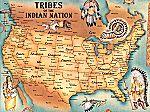 Native American Tribes by States Poster 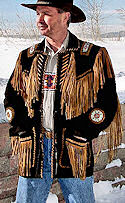 25 new fringed leather jackets 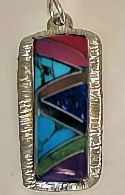 Zuni Style inlaid stone jewelry More New Products |
||||||||||||||||||||||||||||||||||||||||||||||||||||||||||||
Apache chastity and marriage Apache customs regarding courtship, marriage and divorce. Wives and burial place of Geronimo A detailed list of all the wives of Gernonimo and his burial place. Why do we yell "Geronimo"? Learn the legend behind this phrase. Apache tribal amusements, manners, and customs As explained by Geronimo in the telling of his life story.
| |
| Back to Top |Shipping & Return Policies |Customer Testimonials |Site Map |Affiliate Program |Privacy Policy |Contact Us | Submissions |